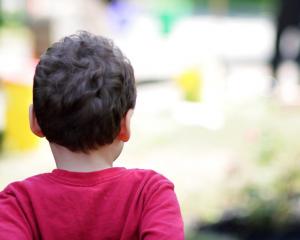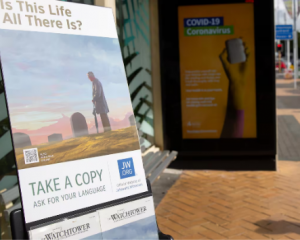This winter, children's charity Variety is facing unprecedented demand for warm clothes, dry shoes and beds from New Zealand families in hardship. Isaac Davison spoke to families seeking help about how they got into hardship, what they need - and how Kiwi families can help.
Like many New Zealanders, Samantha remembers sponsoring a World Vision child when she was young.
"She was in Africa," says the mother-of-two, from Auckland.
"I remember we sent my old dresses over and she sent a photo back wearing one of them and it was just really lovely."
Now, her own daughter is the one being sponsored. Samantha can barely afford the basic essentials.
The previously insignificant items of clothing she used to box up and send across the world are now invaluable gifts to her 6-year-old daughter.
"It's horrible," Samantha, 25, says of her change in fortunes.
"You never dreamed to be in this position. I know there's a lot of people worse off than us and I'm really lucky to have a roof over our head and to provide food. But there's a lot of Kiwis struggling."

There are another 400 families in hardship on the emergency waiting list, and the charity is launching its first nationwide appeal this winter for New Zealanders to help pay for vital items like clothing and bedding.
That is just a small snapshot of the problem. In all, around 135,000 families live in material hardship in New Zealand, meaning they lack daily, basic items like two pairs of shoes.
So far, the Kiwi Kids sponsorship has helped Samantha buy her daughter a pair of dry shoes, long fleece pants and warm pyjamas.
The family live in a $400-a-week flat in Sunnyvale, west Auckland, and Samantha teaches new entrants full-time at a primary school.
"I just love children's drive to learn," she says. "Even the kids that come to school with nothing, they still want to learn."
She earns about $835 a week, and gets Working for Families and the accommodation supplement.
Once she has paid her rent, petrol, food, power, childcare, insurance, phone bill, car costs, and made payments towards her credit card, Work and Income, and student loan debt, she has $1.68 left each fortnight.
That has to cover GP visits, medication, her daughter's school uniform, stationery, shoes, clothes, car maintenance, vet bills, and medical costs related to her daughter's severe asthma and her 4-year-old son's allergies.
"All you want to be able to do as a parent is be able to provide for your kids," she says.
"I can, but it's hard. I go without to make sure they have the fruit and veges they need. I eat lots of toast and soup for dinner, just to make sure they have apples and bananas and mandarins."
She fixes her shoes with a staple-gun from her school classroom. The couch she's sitting on is older than her, inherited from her mother.
According to one of the main measures of hardship in New Zealand, the family is below the poverty line. It is not unique for working families to be in hardship. Around 40 per cent of those classed as below the poverty line have jobs.
"It's like if you calculated the amount of hours a teacher works after school, before school and school holidays, and put that towards the pay scale, we would be getting $4 an hour," Samantha says.
Recent Government changes to welfare were partly targeted at families like hers – those who are not on the bottom rung but are still struggling to get by.
"The family tax credit, yes, that's gone up," she says. "But because that's gone up the accommodations supplement's gone down, so I'm not any better off."
That's where Variety aims to make a difference – to families whose income and support does not quite stretch to getting all the basics they need.
Without Work and Income, Samantha says she would be "under a bridge". But her problems first started when her welfare payments did not cover her costs while she was studying to become a teacher.

"I'm a single mum with two kids, so I've been struggling for a long time."
Her sympathetic landlord, who has barely lifted rent over five years, has put in a heat pump. The family all get dressed in the lounge in the morning because it's the only warm spot.
The house can still get a little damp in midwinter. That is a worry for her daughter, whose asthma is so severe she wears a medic alert bracelet. She has been on so many ambulance trips that they have a St John membership to keep the costs down.
"I hope to be more financially stable. I hope to be able to give my kids everything that they deserve.
"Everything that Kiwi kids should be doing, like sports and getting out there. Maybe little family holidays. Things that I can't do.
She pauses to think of a holiday location.
"Just to the beach," she says. "It would just be nice to go to the beach."
FAMILIES IN HARDSHIP - AT A GLANCE
Child poverty is coming into sharper focus, partly because Prime Minister Jacinda Ardern has made it a personal priority.
The main ways of measuring poverty in New Zealand are through income and material hardship.
If a family earn less than 50 per cent of the median income after housing costs, they are classed as below the poverty line. For example, if a single parent with two kids earns less than $400 after their rent is deducted, they are in poverty.
On latest figures, 20 per cent of New Zealand families are at or below this poverty threshold – around 210,000 families.
To measure material hardship, families are asked whether they have 17 basic items, such as two pairs of good shoes, a separate bed, or daily fruit and vegetables.
If a family does not have seven of the things on this list, they are considered to be in material hardship. At last count, there were 135,000 New Zealand families in this category.
Ardern has set poverty reduction targets that are centred on children. She wants to halve the number of children in poverty from 20 per cent to 10 per cent in a decade.
And she wants to cut the number in material hardship from 150,000 to 80,000 over the same period.
Some steps have already been taken to help families in hardship, including a lift to the minimum wage, law changes to improve rental standards, and efforts to increase affordable housing – though the last of these is yet to get going.
Support was increased for low and middle income families through tax credits, accommodation support and help with power bills and newborns.
There are also plans to overhaul the welfare system to make it fairer and less punitive.
"Sometimes she talks too fast and so much she gets out of breath," Samantha says.
"Especially with the change of weather, she got really bad one night. It's the first time we've ever seen her in-draw, which is when the ribs poke out when she breathes in.
"And she in-draws in the middle of the throat. The ambulance [officer] came in and took one look at her and was like – get her out, we're going. Didn't even assess her here."
In the weeks that she goes to the doctor, she makes up for it by eating bread for dinner: "It's only $1."
In two years, Samantha will be registered as a teacher, which will allow her to earn more.
Comments
Why Why Why is this happening what is being done about this NZ Government , the lady is a teacher and teaching future generations of Kiwis, if teachers are struggling who else is? If teachers give up and move out of Auckland where will NZ be in a few years.












